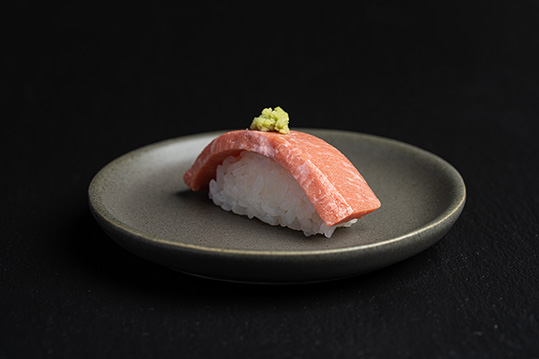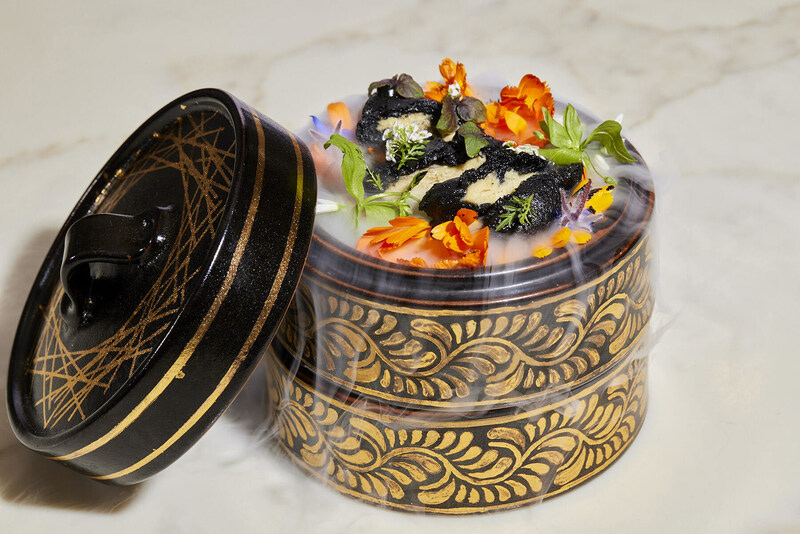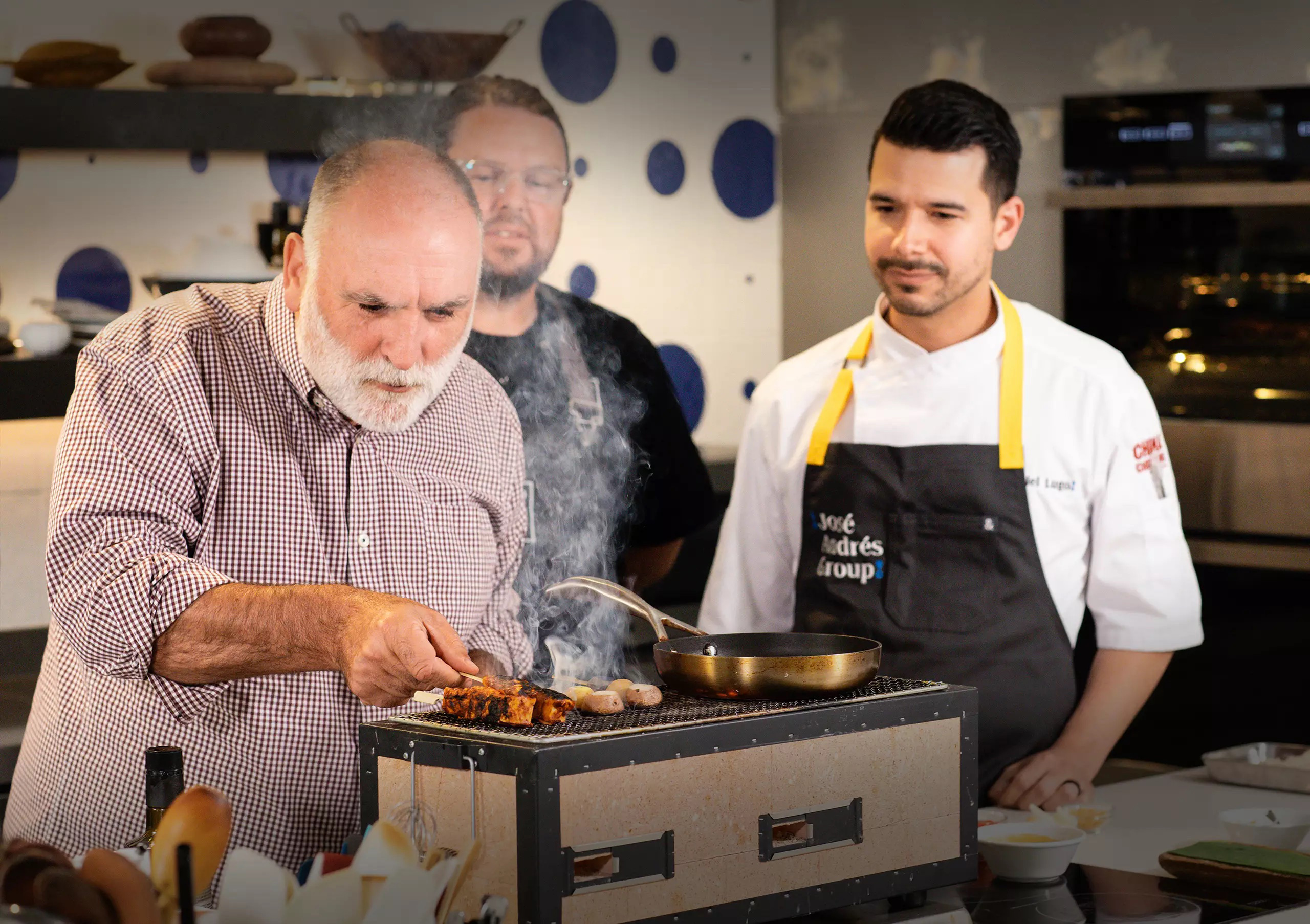

Deep Dive: All together now
If the technical challenges weren’t great enough, different regulations in different countries for cultivated meat producers complicate things further. Is global harmonization of cell ag regulations achievable? More pertinently, if it was, what needs to happen and how soon could it be accomplished?
Due to the nature of the alt proteins industry, almost every new product hitting the market faces some form of regulatory hurdle – and these are often challenges that prove more of a headache for company founders than devising their high-tech products in the first place. And even when a product overcomes all the necessary red tape in its home country, we know what happens next if the company would like to try and sell its products elsewhere.

There’s a lot of talk about the concept of ‘global harmonization’ (the same ‘rules’ wherever a market is located), and the idea of a universal framework for regulatory approvals is sound. But when individual countries can’t even call a product by the same name (alt-milk products, for example), what’s the likelihood of them being able to adopt a general approvals process for more technical issues?
The landscape is further complicated by religious and cultural issues that differ between countries, as well as the fact that some cell ag products and biotech techniques are so new that the regulatory language doesn’t even exist for them.
Singing from the same hymn sheet
Peter Yu, Program Manager at the APAC Society for Cellular Agriculture – an association and coalition of +10 cultivated meat and seafood companies across the APAC region – feels that achieving harmonization is critical. “When you want to build an industry from the roots up, you can’t do that in isolation,” he feels. “It requires everyone to come on board to make sure the cultivated food industry will thrive in the future.”
Over in California, USA, Noreen Hobayan, Director of Quality & Regulatory Affairs at cell-cultured seafood firm, BlueNalu, agrees that collaboration between players is key to success. “What we’re advocating for is a safe way to assess these products,” she states. “And from that perspective, we’re not competitors. It’s important for companies to join forces when it comes to regulatory pathways and assessing safety. It can help us globally to bring these products to market if we’re working together, understanding what the issues are, and being able to come up with solutions together. I think that global alliance can help all companies in the sector.”
Robert E. Jones, President of industry organization, Cellular Agriculture Europe and Head of Public Affairs at Dutch cultivated meat firm, Mosa Meat, echoes Hobayan’s point about separating out commercial competitiveness for the greater good. “I often refer to us [the various market players] as ‘pre-competitive’. We have to create and access a market first. And then we can ‘duke it out’ in the grocery stores and restaurants for who’s got the best product!”
To get an approval in Europe, you have to not just work at the EU level, you have to really understand the politics, nation by nation and the viewpoint on these new foods
The US landscape
As well as her role with BlueNalu, Hobayan is Vice President of the Association for Meat, Poultry and Seafood (AMPS), which represents a group of food companies dedicated to producing meat, poultry, and seafood directly from animal cells. “What our member companies have in common is that we all have a physical presence in the USA,” she explains. “And we’re all commercializing (or in the process of commercializing) these products in the USA at some point in the future.”

As most have now seen following the successes of UPSIDE Foods and Eat Just’s GOOD Meat, the Food and Drug Administration (FDA) and the United States Department of Agriculture (USDA) share joint responsibility for regulation of food in the USA. Hobayan describes them as being “super proactive” when it comes to regulating cell ag products. “As early as 2018, they held a public meeting to look for input and then in 2019, they came up with a joint regulatory framework – which is a unique approach.”
Explaining further, Hobayan says, “In this agreement, the FDA oversees cell collection, cell banks and cell growth, and differentiation. And then they transition oversight to the USDA’s Food Safety and Inspection Service (FSIS) after harvesting, so they’ll then oversee the further production and labeling of meat and poultry products. And then at the same time, the FDA will maintain jurisdiction over seafood.”
Hobayan points out that this approach mimics what happens now in terms of traditional meat and seafood. “In the USA, the FDA regulates live animals up until the point they’re used as food; when they’re presented for slaughter, the USDA takes over the authority. So, we have the Federal Meat Inspection Act, and we also have the Poultry Products Inspection Act. The regulation for cell-cultured foods follows the same framework.”

Hobayan adds that, within that framework, where the FDA is responsible for overseeing the pre-market approval, the organization has already set up a pre-market consultation process. “In that process, the FDA is evaluating the safety of food made from cultured animal cells before it enters the market. And the process allows the cell-cultured meat and seafood companies to work with the FDA on a product-by-product basis, and it helps inform the FDA of the issues that they have to consider to be able to produce the food safely. So, as part of that, the FDA also evaluates the production process, and the cell-culture material made by that process, as well as the establishment of the cell lines, the manufacturing controls, components, and inputs. So, it’s very similar to what you might see in a normal foods process in another country. And so far, the FDA has been very supportive with this consultation process.”
What’s in a name?
Of course, in this arena, it’s not only the products themselves that have to go through regulatory pathways – their names are also subject to legislative scrutiny. Until recently, in the USA, how cell ag products could (or should) be labeled wasn’t entirely clear. That, of course, was clarified upon the landmark GOOD Meat and UPSIDE Foods milestones of 8 and 14 June 2023, respectively.
As a cultivated meat product grown directly from real animal cells, UPSIDE’s ‘cell-cultivated chicken’ is subject to the same labeling requirements as conventionally produced meat products. GOOD Meat and most of the industry prefer the term ‘cultivated’. The USDA subsequently approved the term ‘cell-cultivated’ for both companies.
Following its final regulatory hurdle a week or so later, obtaining Grant of Inpsection (GOI), UPSIDE processed its first order of its cultivated chicken, placed by three-Michelin-star Chef Dominique Crenn, and it was launched at the renowned Bar Crenn in San Francisco on Saturday 1 July 2023.
Just four days later, on 5 July, a landmark dinner was hosted by GOOD Meat at China Chilcano by José Andrés to honor Willem van Eelen’s 100th birthday, which would have been 4 July (the Dutchman is widely recognized as ‘the Godfather of cultivated meat’).
Continental drift?
From his base in the Netherlands, Jones observed all of these events with huge interest. “I think every company in the world was super excited to see all of these announcements over the past several months, in part because it was yet more highly credible regulatory bodies affirming the safety of these products,” he comments.
In Europe, the geography of the regulatory landscape is complex. “Cellular Agriculture Europe is formed of 14 companies across Europe and Israel, but we’re not just focused on the EU proper,” Jones says. “We’re engaged in the UK, and non-EU states as well, such as Switzerland.
“Looking at the EU first, the Novel Foods law has existed for many years, and it was last updated in 2018. So, the nice thing about Europe is that there’s a very clear pathway for these sorts of foods, and they’ve envisioned bringing new foods like these onto the market for many years. The challenge is that the process is designed to move slow, because it’s broken into two parts.
“There’s the risk assessment by the European Food Safety Authority (EFSA), which is fairly standard and similar to what we see in Singapore and other regions,” explains Jones. “Where there are procedural differences is that if the Singapore Food Agency (SFA) has questions about the dossier or your analysis, they can inquire and have dialog with you while the rest of the dossier is still being examined and moving forward in the process.

“In Europe, though, if EFSA has questions about your dossier, and application, they will formally stop the clock and all work on the dossier grinds to a halt. And that adds months to the time: you can go from a nine-month risk assessment to 18 months fairly quickly, which is one of the reasons that I think many companies have really taken the opportunity to learn from regulators and other regions to better understand what the EFSA would be looking for.”
Jones concedes that, despite potential delays, the European process itself is very clear. “Once you get a positive safety review from EFSA, it’s moved back to the European Commission, which authorizes the product and adds it to the approved list of novel foods.
“The risk management phase authorization is where a little bit more of the politics seep into the process,” Jones observes. “To get an approval in Europe, you have to not only work at the EU level, you have to really understand the politics, nation by nation, and the viewpoint on these new foods.
“All together, the whole process, if it goes smoothly, is about 1.5-2.5 years. And post-Brexit, the UK has continued to carry over the Novel Foods law and the risk assessment in the UK is exactly the same.”
Jones also makes the highly relevant point that there hasn’t yet been an application submitted to either EFSA or in the UK. “We’ve yet to pressure-test that process,” he says.
APAC perspective
Commenting on how things compare in the APAC region, Yu begins by stating that, as in Europe, there isn’t a ‘one-rule-for-all-APAC-members’ structure in place. “There are many countries here that are not regulated under one umbrella. Everyone knows Sinagpore has a regulatory framework in place and it is governed by the SFA and has been in place since 2019, with regular updates and amendments.
I know that the Chinese and US regulatory experts have met to discuss this together. So, we’re waiting for some exciting news from China in 2023
“In general terms, the SFA seeks a pre-market assessment regarding all foods: companies need to submit a dossier with information regarding toxicity, allergenicity, safety, production methods, dietary exposure, and so forth, and they must provide information about material used, control and manufacturing processes. It’s essentially a holistic, comprehensive review to ensure the safety of the food products.”

Yu also mentions that, in Singapore, there is another organization working to drive change on the regulatory front. “We have an initiative called FRESH (the Future Ready Food Safety Hub), which is a tripartite function between Singapore’s Agency for Science Technology & Research (A*STAR), the SFA, and Nanyang Technological University (NTU). So, essentially, they assist on the applications, sort of formulating a pathway to clear any regulatory hurdles. This is driven by the government agencies themselves, so it’s fair to say we have good support here for a pathway of regulatory efficiency.”
China is another APAC region that’s focusing on the safety assessment protocols for the cultivated food industry. “This will most likely be regulated under the CFSA, which is the China National Center for Safety Risk Assessment,” Yu says. “There have been discussions between industry players in China to assist in the development and it’s currently being undertaken. I know that the Chinese and US regulatory experts have met to discuss this together. So, we’re waiting for some exciting news from China in 2023.”
Yu also flags up Korea as another area to watch. “There will be a special legislative zone into which the companies can sell their food products prior to any regulatory approval – sort of like a test market, which I think is really an interesting initiative,” he details.
Speaking more generally about the APAC region as a whole, Yu says: “If you look into the overall trend here in Asia, the countries have really gained a level of commitment from the government to further the development of the industry, to which regulation is really at the forefront. Just recently, the Japanese Prime Minister, Fumio Kishida, touted the importance of the industry regarding sustainable food supplies and the importance of creating new market and clear guidance, especially in safety and labeling in Japan.”
Back in the USA
Clear guidance is one area where the US landscape has traditionally been lacking. But Hobayan reports positive changes afoot on this front. “In January 2022, the FDA commissioner announced reorganization of the FDA and part of that involves the creation of the ‘Human Foods Program’. This will help elevate the program, reduce some redundancies, and help improve communication.
“Another thing that happened recently was President Biden’s Executive Order about the bioeconomy. I was really excited to see our category of products included in this conversation. There were some very high-level meetings and some of our member companies were even invited to the White House to speak about the potential for cell-cultured products to contribute to our society in general, and also to the economy. So that Executive Order put together some guidelines and one of them was that the regulations will be looked at. President Biden has identified that there are certain uncertainties regarding new technologies and wants to produce a plan for regulatory reform.”
Hobayan caveats that good news with awareness that positive momentum needs to continue. “When you are looking at new technologies, sometimes it’s hard: regulations can’t keep up with the pace that new technologies are moving. But the Order specifically asked FDA and USDA to look at new food technologies such as ours, and to make recommendations for how the regulatory pathway can keep up and to facilitate the growth of new technologies and the impact that that would have on the economy.”
The role of international organizations
Jones says that Europe can learn from the great progress in the USA. “The center of gravity feels like it’s shifting to the USA, so it’s been helpful for us to light a fire under some of our counterparts in Europe,” he says.

He is optimistic about the platforms starting to develop to foster global harmonization but also observes, “In reality, we’re talking about a fraction of the countries around the world out of hundreds that are still talking about this. And that’s the vanguard for our industry – these countries are all going to be needing to develop regulatory structure in the next five and 10 years.”
Luckily, there is some precedent for setting up guidelines in the form of the Codex Alimentarius process. Explaining for the uninitiated, Jones says, “The Codex Alimentarius Commission, which is based in Rome, is Latin for the ‘Food Code Commission’. It was created in the 1960s and is a partnership between The United Nations Food & Agriculture Organization (UN FAO) and the World Health Organization (WHO). They focus on creating international standards and guidelines to UN codes of practice to protect consumers and ensure fair practices and the standards are used worldwide to really harmonize national food safety standards.
“Many countries that may not have any legislation on the books for regulation will look at Codex as a model for how to adapt their national food laws in harmonization with global structures,” Jones explains. “Of course, Codex announced a couple of years ago that they needed to update their rules around ‘new foods or novel foods’ – ours included – which kicked off a process at the FAO to develop some standards around safety.”
Food safety aspects of cell-based food was published by WHO and FAO in =March, which looked at the technologies used to produce cell-based foods, potential food safety hazards, and regulatory frameworks in various countries.
“One of the challenges that we’ve faced at Cellular Agriculture Europe with Codex is that it’s an official body that represents 188 member countries and the EU,” Jones continues. “And there’s a few hundred officially recognized observers and NGOs (The Good Food Institute is one). We applied for observer status as an industry association and were denied because they said we were too new! Our voice as an industry has been shut out of this process.”
Hobayan shares Jones’ frustration. “We have a close relationship with The Good Food Institute, but we’re also kind of shut out of the conversation,” she says. “For the most part, industry is not part of what’s going on. And I think the reason is because it is so new. But we’re paying close attention to the activities and working through our relationship with GFI to influence as much as we can.”
When asked for their wishlist of standardized regulations in a perfect world, each of Jones, Yu and Hobayan have their own take. Yu says expanding on the current good work is top of his list. “What SFA has been doing quite well is this effort toward more widespread collaboration. My wish is to expand upon that with the idea of a greater platform for collaboration, coordination, information and synergy here in the APAC region.”
Hobayan believes that more mutual recognition agreements between countries would help players such as BlueNalu speed things to market and also “reduce the burden”
for regulatory agencies around the world.

“I’m working on figuring how we can introduce these products in multiple countries. And each one is a different pathway,” Hobayan says. “So, it’s a tremendous amount of work and information I have to put together and I’m repeating it for every country in which we want to commercialize. If we had mutual recognition agreements, we could recognize each other’s food safety assessments and GMP systems, and be able to share data. That would facilitate market access and encourage harmonization overall.”
Jones supports Hobayan and Yu’s wishlists although he would like to see more coherence between public policy goals of a country and the regulatory structure.
“There’s a lot of people applying with novel food dossiers for a range of products – things such as CBD-related edibles, for example – that put a backlog on a system that is on limited resources by the civil servants,” he says. “And if, for example, a country has a strong commitment to climate goals and the Paris Climate Accord, I would like to see that tied to civil servants having the power to give priority to approval of products.”
If you have any questions or would like to get in touch with us, please email info@futureofproteinproduction.com







